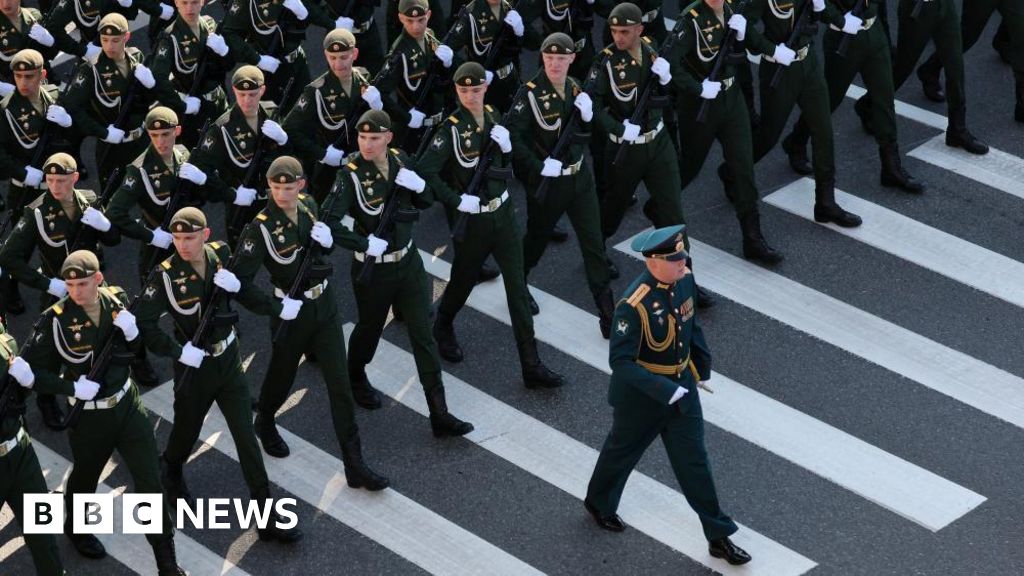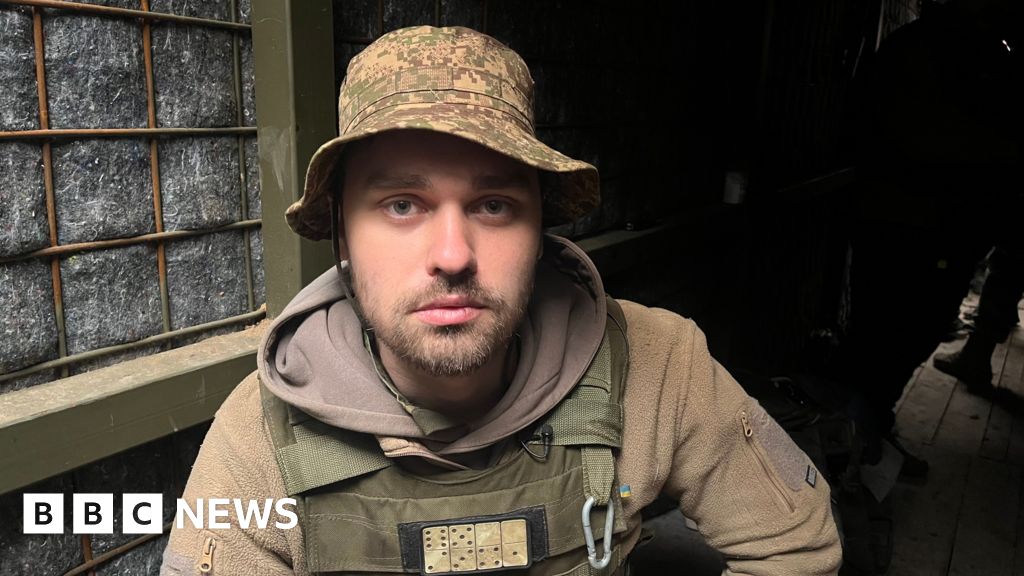ARTICLE AD BOX
 Image source, Reuters
Image source, Reuters
A truck carrying aid arrives in Rafah
People in Gaza are suffering severe food shortages, with the UN saying children in northern Gaza are starving to death and famine is looming.
The quickest, most effective way to get aid into the territory is over land - but the entry of trucks via two crossings in southern Gaza has so far not met the need for food.
Cogat, the Israeli body that coordinates humanitarian aid to Gaza, says that so far this month an average of 126 food trucks have entered each day. It says this is more than the 70 trucks carrying food specifically that entered Gaza before the war. Some 500 trucks in total entered Gaza each day before the war.
But military operations and the breakdown of social order have severely hampered aid distribution, while Gaza's food production has also been severely affected, with farms, bakeries and factories destroyed or inaccessible.
Given the inability to get enough food to the people who need it over land, countries have been trying alternative routes via the skies and sea.
Here is a look at the various routes in operation.
Air
The US, Jordan, Egypt, France, the Netherlands and Belgium have been dropping aid into Gaza in recent days as concerns about famine among the population grow.
The first aid drop by the US on 3 March, carried out with Jordan's Air Force, contained enough food for more than 38,000 meals. A defence official told CBS News, the BBC's US partner, this involved three C-130 cargo planes which dropped 66 bundles. And the US says it dropped 27,000 "meal equivalents" and nearly 26,000 bottles of water into north Gaza on Tuesday.
Image source, EPA
Image caption,Humanitarian aid is airdropped by an unidentified military transport aircraft over northern Gaza
On 21 February, four tonnes of medicine, fuel and food for patients and staff at Tal al-Hawa hospital in Gaza city were dropped. The aid was UK-funded and air dropped by Jordanian Air Force.
However, humanitarian groups say airdrops are not sufficient to meet the needs of 2.3 million Gazans, with the WFP previously calling them a "last resort" that will not avert famine. It is also difficult to ensure the packages get to those who are most in need.
Also, the strategy is not without its risks.
Last week, five people were reportedly killed after a parachute failed on an aid package dropped by air.
Sea
In the last week two initiatives have been announced to help get vital aid into Gaza by sea.
The Spanish ship Open Arms has arrived off the Gaza coast from Cyprus - the nearest EU country to Gaza. It is towing a barge carrying around 200 tonnes of food provided by the US charity World Central Kitchen (WCK). It says a further 500 tonnes of aid is ready in Cyprus.
According to WCK, the shipment of rice, flour, lentils, beans, and canned tuna, beef, and chicken contains enough food for almost half a million meals.
Image source, EPA
Image caption,The Open Arms arrived off Gaza on Friday
Gaza has no functioning port, so WCK is building a jetty to receive the aid.
If Open Arms successfully docks in Gaza, other ships will follow as part of a European and Emirati maritime effort to get more aid into Gaza.
A separate ship is on its way from the US carrying materials to build a floating dock and pier, to enable supplies on far larger cargo ships to get ashore.
According to the US defence department, it will mean two million meals a day could enter Gaza, much more than is currently possible through the Rafah border crossing with Egypt or through airdrops.
But the pier is not expected to be ready for around two months.
Earlier this week, State Department spokesperson Matthew Miller said the maritime option was being explored because other options were insufficient. But he said there was no substitute for assistance coming in trucks over land.
In the meantime, UK Foreign Secretary Lord Cameron has urged Israel to open up its deep water port at Ashdod, 25 miles north of Gaza, to where aid could be shipped from Cyprus and then driven into Gaza.
Land
Western countries have been pressing Israel to expand delivery of aid by road, facilitating more routes and opening additional crossings.
On Friday Australian Foreign Minister Penny Wong said there were large stocks of food waiting to go in to Gaza "but there is no way to move it across the border into Gaza and deliver it at scale without Israel's cooperation and we implore Israel to allow more aid into Gaza now".
Israel denies impeding the entry of aid to Gaza and accuses aid organisations of failing to distribute it.
The first convoy into Gaza, 20 trucks carrying aid from the UN and Egyptian Red Crescent, entered on 21 October via the Rafah crossing on the border with Egypt - two weeks after Hamas attacked southern Israel, sparking the current war.
These included three trucks carrying 60 tonnes of food including canned tuna, wheat flour, pasta, canned beans and canned tomato paste.
In November, the WFP said just 10% of needed food supplies had entered Gaza since the start of the war.
Image source, Reuters
Image caption,Palestinians carry bags of flour from an aid truck in Gaza City
Some 750 tonnes of food aid arrived on 20 December 2023, using a land route through the Kerem Shalom crossing between Israel and southern Gaza for the first time. The WFP convoy was made up of 46 trucks. A second delivery of 315 tonnes was made in January 2024.
In total in January, the WFP said it only managed to get four convoys into Gaza - around 35 truckloads of food, enough for almost 130,000 people.
On Tuesday the UN said a new land route had been used to deliver food to northern Gaza for the first time in three weeks. The Israeli military said six lorries from the World Food Programme crossed via a gate in the Gaza border fence. Tuesday night's delivery was "part of a pilot to prevent Hamas from taking over the aid", it added.
The convoy carried enough food for 25,000 people - about 88 tonnes of food parcels and wheat flour in six trucks. It was the first UN delivery to this part of Gaza in three weeks, after the WFP paused deliveries "until conditions are in place that allow for safe distributions".
Some other convoys have reached northern Gaza - but their arrival has seen deadly violence.
On 29 February more than 100 people were killed when a convoy arrived at al-Rashid Street in Gaza City. Palestinians accused Israel of shooting dead people at the convoy. Israel initially said most were killed being trampled or run over by the convoy. It later said troops had fired at people who it deemed "suspects" who they deemed a threat.
Other supplies are also being sent to the region. The UK has sent aid to Egypt for Gaza including 74 tonnes of wound care packs, tents, blankets and aid delivery equipment such as forklift trucks, 87 tonnes of thermal blankets, shelter packs and medical supplies, and 17 tonnes of family sized tents.
All aid for Gaza is subject to strict Israeli security checks aimed at preventing anything that could be used by Hamas from entering Gaza.
In January the WFP said "generators, crutches, field hospital kits, inflatable water tanks, wooden boxes of children's toys and, perhaps most depressingly, 600 oxygen tanks" had all been rejected for entry to Gaza by Israeli authorities.

 1 year ago
114
1 year ago
114








 English (US) ·
English (US) ·